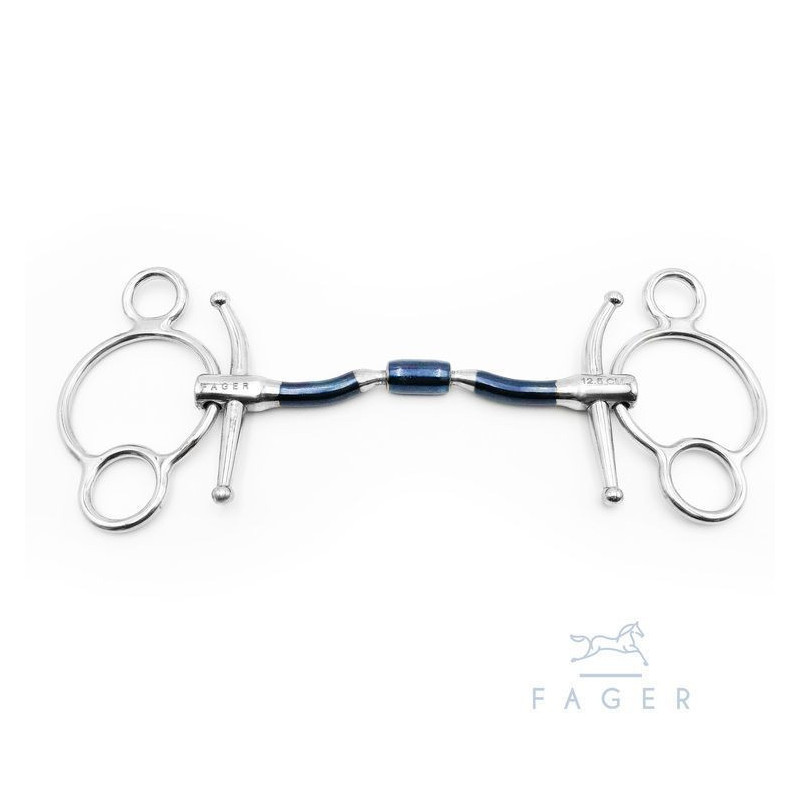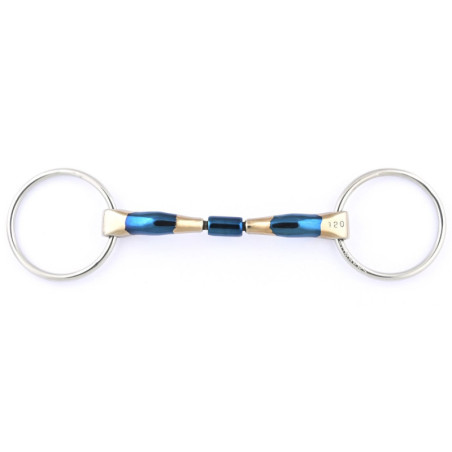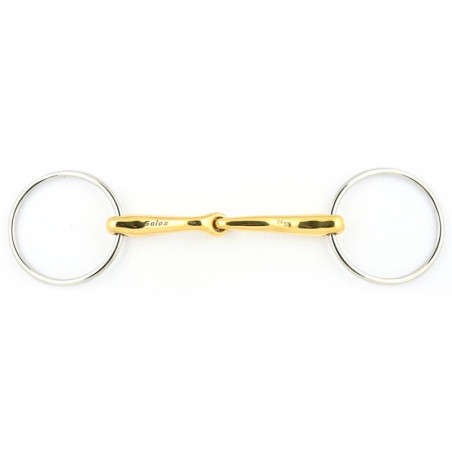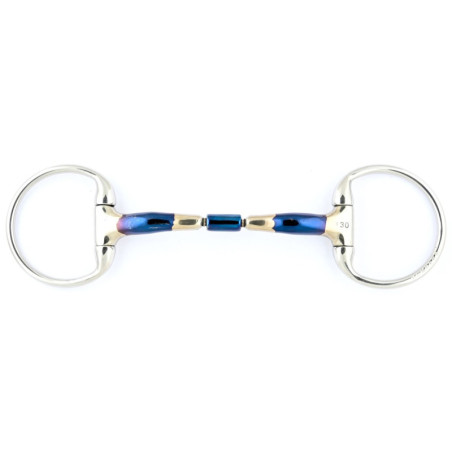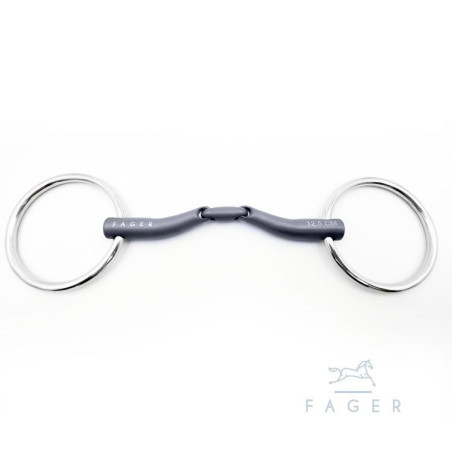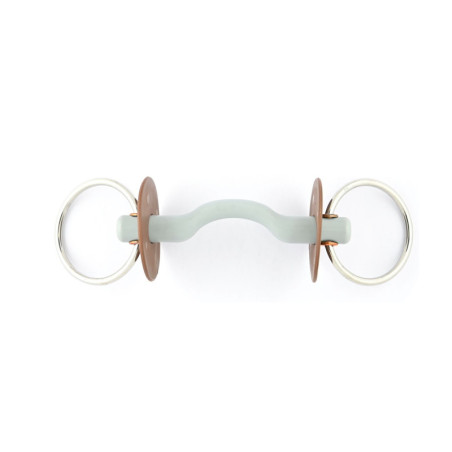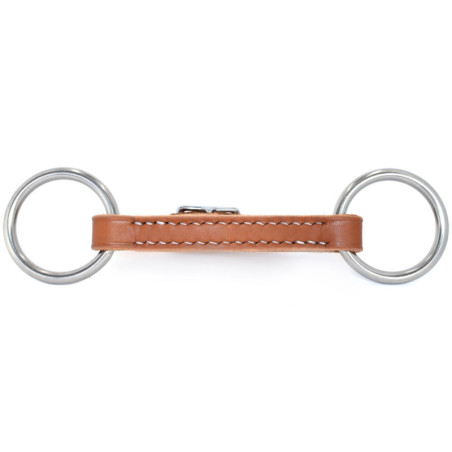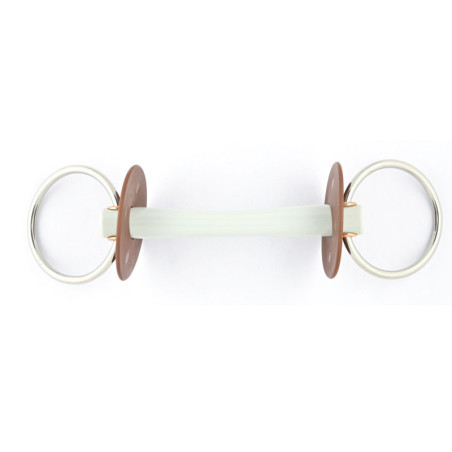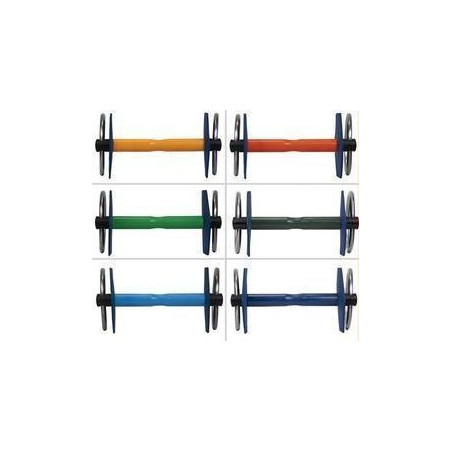
Fager
NILS Fulmer Universal Barrel
Our teams are here to help you at +33 (0) 6 36 40 70 16
9.7 / 10 customer satisfaction rating on verified reviews
Possibility of converting your purchase into a lease
Expert opinion
: The NILS pessoa fulmer barrel bit is a blocked double snaffle bit with a central cylinder. The central cylinder offers increased stability of the bit in the horses mouth. It allows for a more symmetrical "left/right" contact which helps the horse to come into tension. The blocking action eliminates the risk of tongue pinching, making it more effective and direct on the rider's demands. The downward tongue passage limits the pressure on the bars by exerting a more direct action on the tongue. Nevertheless, thanks to the central barrel the contact remains relatively comfortable for the tongue. This model is ideal for horses that are easily injured. The pessoa offers a better control through a leverage effect on the neck. It can also be used with a curb chain. It is possible to use it with lifter posts. The leverage of the pessoa can be adjusted according to its installation:
- Reins on the bottom ring for maximum leverage.
- Reins on the middle ring to have a baucher type effect.
- Reins with rings to be in between.
Material
SIZING GUIDE
| Size | Barrel thickness | Rings size |
| 105 mm | 12 mm | 60 mm |
| 115 mm | 12 mm | 60 mm |
| 125 mm | 14 mm | 65 mm |
| 135 mm | 14 mm | 65 mm |
| 145 mm | 14 mm | 70 mm |
Sweet Iron : Sweet Iron alloy oxidizes upon contact with moisture in the mouth and air. The oxidation brings a sweet taste that naturally stimulates the production of saliva. This corresponds to the effect of a sugar that is given to the horse at the beginning of the session but allows to diffuse this sweet taste throughout the work. Therefore, this alloy allows a good acceptance of the bit and helps the horse to make contact with the mouthpiece. The oxidation modifies the aspect of the bit during the sessions.
Fiche technique
| In stock | 1 Product |
|---|---|
| Rings size | 60mm / 65mm / 70mm |
| Mouthpiece type | plein |
| Thickness | 12mm / 14mm |
| Weight | 240g |
| Side pieces | 3 Rings / Full cheek / Fulmer |
| Material | Sweet iron |
| Mouthpiece | Bloqué / Double brisure / Passage de langue |
| Reference | NILS/ARR |
